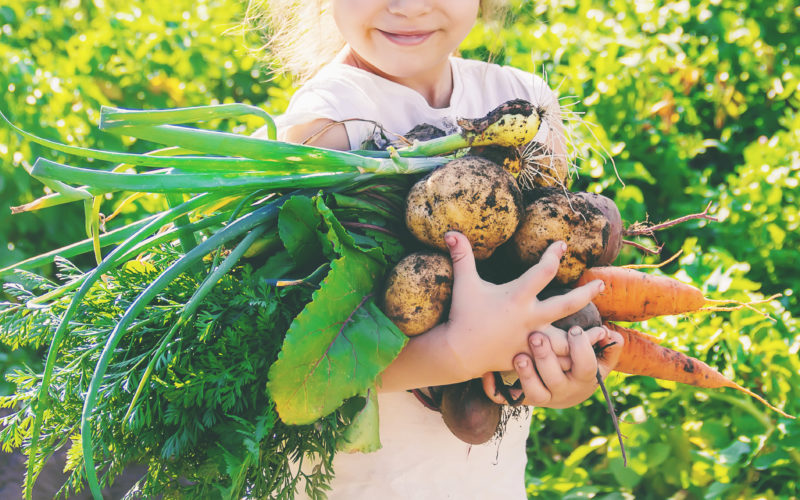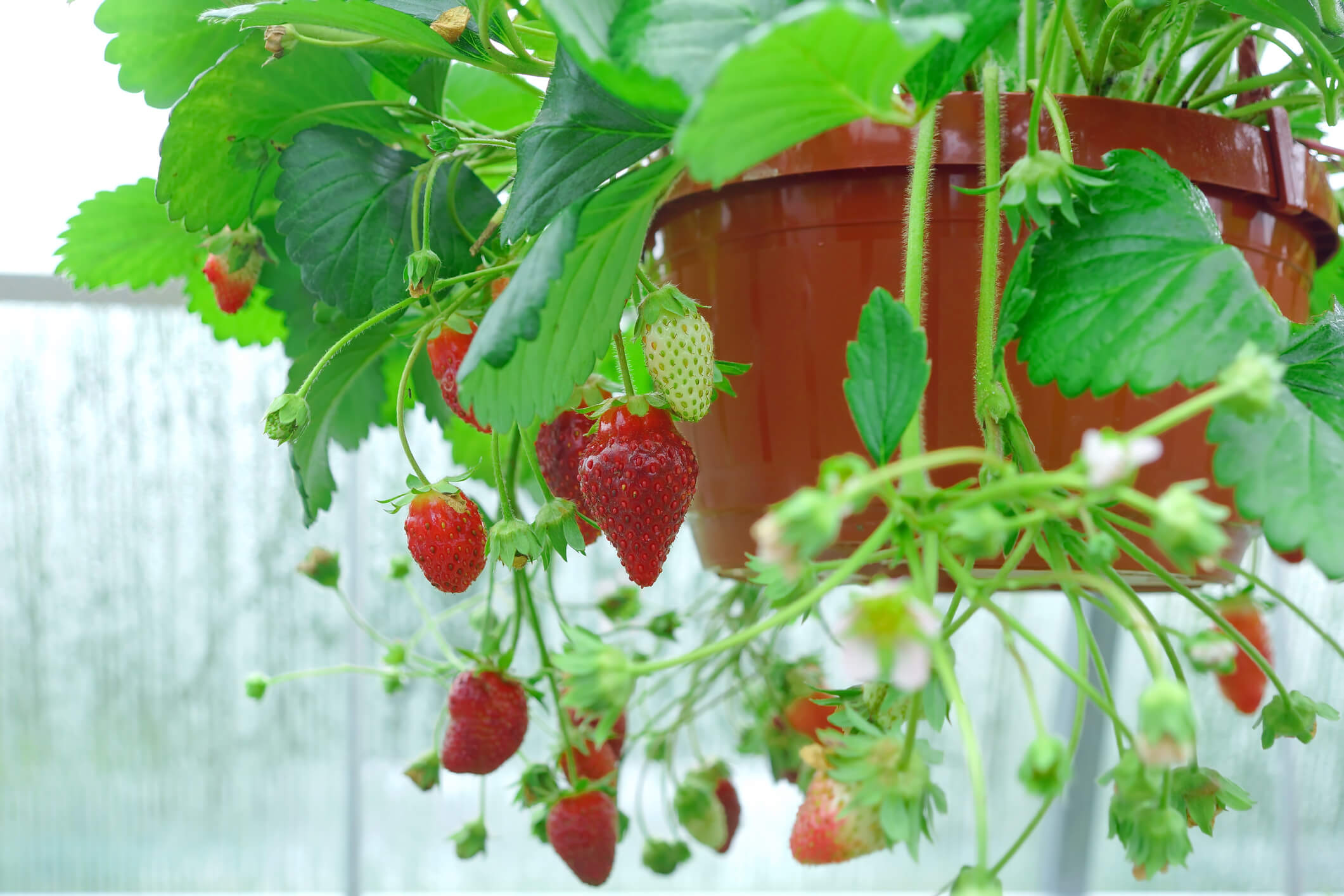How to Grow an Organic Garden in 5 Simple Steps

If you’re new to the world of gardening, you might be intimidated by all of the work it takes to harvest a small crop of backyard vegetables and herbs. But, growing an organic backyard garden can provide nutrition for your family, help your local environment, and provide a great way to spend a weekend. With a little help, you can learn how to grow an organic garden in just five steps.
1. Choose Your Location
When it comes to planting a garden, it’s crucial to find the perfect location. You’ll need to consider a variety of factors before you select the organic plants you want to grow.
Pick Your Foundation
Fortunately, organic gardens can be grown just about anywhere. Some of the most popular setups include:
- Traditional garden beds
- Raised beds (either elevated or on-ground)
- Containers
Some organic gardeners prefer to use raised beds or containers because they have more control over the soil quality and type. They can know for sure that no pesticides or chemicals have ever been applied to the soil, and they can choose a soil setup that will work well with their plants.
Check Sunlight Levels
You’ll also need to keep your sunlight levels in mind when selecting your garden location. You probably won’t have much luck growing sun-loving vegetables in a totally shaded corner.
Rolling raised bed and container gardens are great options if you’re just learning how to grow an organic garden. If you find that your plants aren’t getting enough sunlight or are getting scorched from too much direct sun, you can simply move them! That being said, most common plants are hardy enough to survive variable sun in a stationary garden.
Prevent Pests Pro-Actively
You’ll also want to look for a spot that is not overly exposed to pests, since you won’t be using any pesticides to keep them away. Rotating crops every year will keep insect colonies from taking up residence underneath your delicious plants.
You may also want to consider growing your tastiest plants in hanging baskets to prevent mice and rabbits from eating them. With a little creativity, you may be able to avoid squirrels and chipmunks as well.

2. Prepare Your Soil
Soil preparation is one of the most commonly skipped steps when it comes to beginners learning how to grow an organic garden. But, it can make the difference between a delicate garden that requires lots of maintenance, and a hardy garden that thrives all summer long.
There are three basic steps to preparing your soil to grow organic plants:
- Cultivate your soil. Most backyards are full of hard-packed clay soil that won’t drain well or allow for proper root expansion. You’ll need to till your soil to add in air and loosen up the ground to allow water and air to circulate properly.
- Add organic matter. This is an especially important step in growing an organic garden if you’re planting in sand or clay-based soil. Compost, manure, and decaying leaves will all add nutrients and help your plants thrive.
- Use your space wisely. Spacing out your plants according to their specific instructions will prevent them from competing with one another for soil nutrients.
3. Choose Your Plants
One of the most common mistakes beginners make when learning how to grow an organic garden is choosing the wrong plants. While an experienced gardener may be able to get nearly any plant to thrive, beginners should start with hardy plants that grow quickly. Check out these organic plants to get started:
- Tomatoes
- Bell Peppers
- Hot Peppers
- Sweet Potatoes
- Radishes
- Carrots
- Fennel
4. Help Your Garden Thrive
Tending to an organic garden is much like maintaining a conventional garden. However, since you won’t be using any pesticides, you may need to put in a little extra work to keep your garden thriving.
Watering Your Garden
If you’ve prepared your soil properly, watering your organic plants should be a breeze. Give your plants a deep soak two to three times a week, allowing summer rains to supplement your watering schedule. Every garden is a little different, so make sure to pay attention to your soil — it will let you know when it’s too moist or too dry.
Weeding Around Your Plants
Opting to grow your garden organically means you’ll likely have more weeds to contend with. You can reduce the number of weeds in your plot by grouping similar plants together in rows.

Preventing Insects and Animals Without Pesticides
If you’ve cultivated healthy soil and planted appropriate organic seeds, you shouldn’t have nearly as much trouble repelling insects. However, there are a few additional things you can do to keep your garden insect and chemical-free:
- Choose hardy varieties. While some entire plant families can handle extreme conditions, others are more delicate. However, most families have at least one or two hardy subspecies. Plant catalogs are a great way to explore hundreds of varieties of plants.
- Attract desirable insects. Part of repelling undesirable insects is welcoming in predator insects that will handle your pests for you. Fragrant organic plants and herbs like calendula and coriander provide food and shelter for friendly garden predators.
- Remove outbreaks and swarms. If you see a plant that is truly getting eaten alive, remove the bugs to reduce their effects and relocate them far away from your garden. You may also want to remove damaged leaves and fruit to help the plant reallocate its energy and resources.
- Rotate crops each year. Try your best to alternate what you grow in each section of your garden every year. This helps diversify and revitalize your soil, and it also prevents insect colonies from forming under their favorite organic plants.
5. Harvest Your Organic Vegetables and Herbs
After all your hard work learning how to grow an organic garden, it’s time to harvest your plants! Each plant is different, so you’ll have to consult the instructions that came with your seeds or seedlings.
Be sure to pick at the right time, and to minimize your damage to the plant during harvest. While many organic plants, vegetables, and herbs can be harvested with just your hands, you may also want to invest in a small pair of garden shears. Then, all that’s left to do is enjoy!
Ready to get started planting an organic garden? Find your local Stauffers of Kissel Hill, where our experts will be happy to help!
